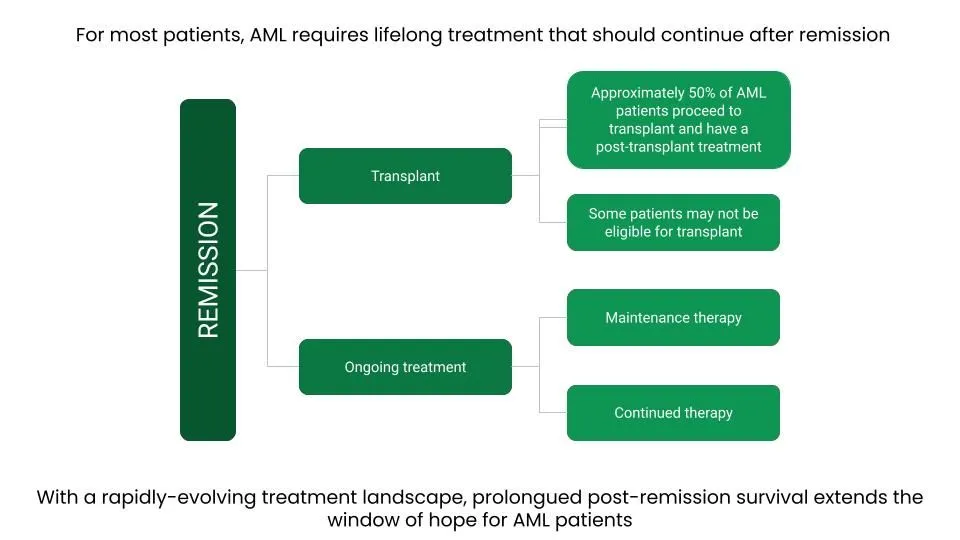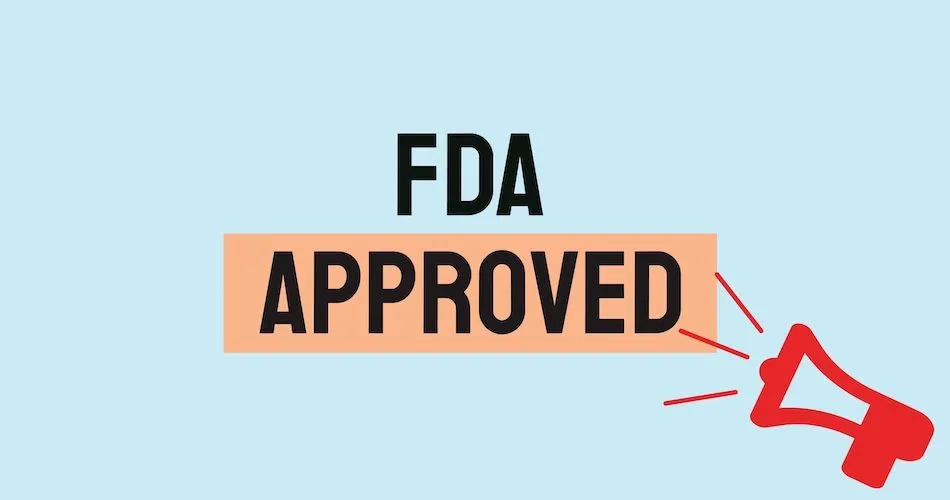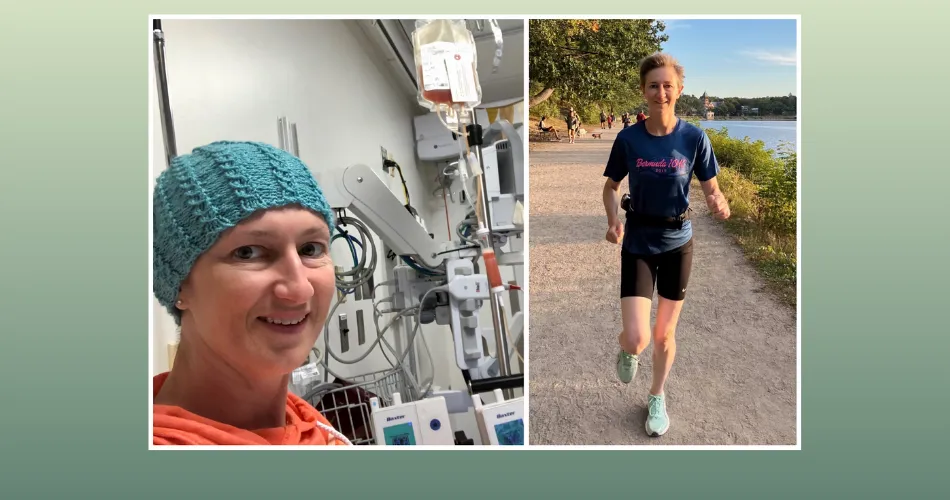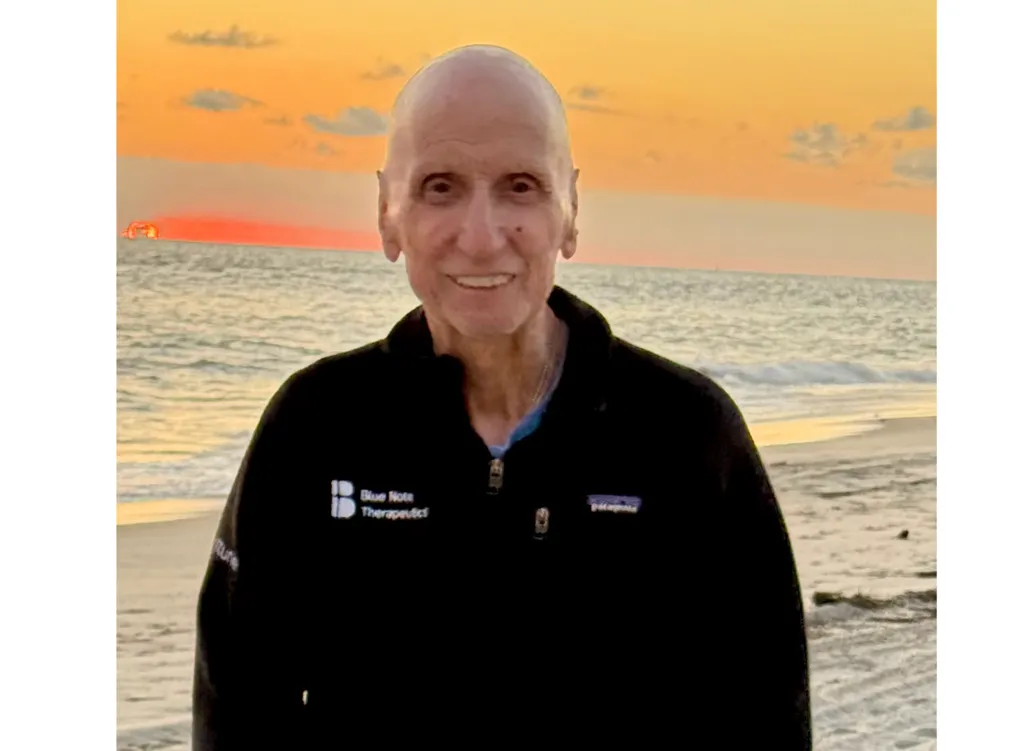Updated Recommendations for Oral Azacitidine to Maintain Longer AML Remissions

Acute myeloid leukemia is a cancer of the bone marrow that affects blood-producing cells. It commonly affects the elderly and is known for its aggressive nature, meaning it is very hard to maintain remission.
Complete remission is achieved with standard induction chemotherapy in 40 to 60% of AML patients over 60 years old. However, patients may or may not receive consolidation therapy after complete remission or complete remission with incomplete blood count recovery: 80 to 90% of patients eventually relapse.
Although hematopoietic stem-cell transplantation (HSCT) after induction chemotherapy is potentially curative, some patients may not be eligible to receive a transplantation due to various reasons such as:
- Lack of social support
- Cost
- Low performance status (this is evaluated by a physician, one example is the ECOG performance status score)
- Favorable risk status (does not present aggressive mutations)
- Donor quality/availability
- Risk of non-relapse mortality (death without recurrent or progressive disease after transplant)
Expanding the options for continuous therapy after remission is crucial for better survival outcomes. Therefore, preventing early AML relapse with continuous/maintenance therapy after remission is an important goal.
What is Onureg, and how can it help maintain remission?
Onureg is the brand name for oral azacitidine, a medication in a family of drugs known as hypomethylating agents (HMAs). These drugs reprogram cancer cells to a normal-like state and sensitize them to chemotherapy and immunotherapy.
Onureg is potentially a groundbreaking therapy because it can be given to patients who achieve remission with chemotherapy but can’t get a stem cell transplant to extend remission time. Additionally, it can help patients with any kind of risk status.
Research helps to expand new therapies to improve AML overall survival: The QUAZAR AML-001 study.
The efficacy of onureg was evaluated in QUAZAR AML-001, a phase 3 study. The participating patients were older than 54, had AML, and were within 4 months of complete remission. 472 patients who completed induction with or without consolidation therapy were randomized to receive onureg 300 mg (238 patients) or placebo (234 patients) orally on days 1 through 14 of each 28-day treatment cycle.
The trial demonstrated a statistically significant improvement in overall survival for patients randomized to onureg compared with placebo.
After these groundbreaking results, the NCCN Guidelines were recently updated to include Onureg as a Category 1 preferred maintenance treatment.
What do the updated NCCN Guidelines for Onureg recommend?
- The update establishes a recommendation for Onureg to be given to AML patients who achieved first complete remission (CR) or complete remission with incomplete blood count recovery (CRi) following intensive induction chemotherapy and are not able to complete intensive curative therapy
- Onureg is recommended as the preferred maintenance treatment option across all risk categories
- Onureg can be given to patients with favorable-risk disease (other than CBF-AML) and patients who completed a recommended course of consolidation
- It is not recommended to substitute Onureg for subcutaneous or intravenous azacitidine (also known as Vidaza)
It’s important to remember that drugs have different ways to be administered, for example, a tablet or an injection.
How a medication is given also changes the dose and the expected effects. For example, azacitidine has an oral, subcutaneous, and intravenous presentation.
Still, only the oral presentation Onureg has been approved for continued treatment of adult patients with acute myeloid leukemia who achieved complete remission or complete remission with incomplete blood count recovery following intensive induction chemotherapy and are not able to undergo a transplant.
What are Onureg (azacitidine) common side effects?
- Gastrointestinal: nausea, vomiting, diarrhea, constipation
- Musculoskeletal: fatigue/asthenia and pain in joints and extremities
- Other: low white blood cell counts (neutropenia), dizziness, pneumonia, abdominal pain, and decreased appetite
Accelerate the discovery of new treatment options by connecting records to HealthTree Cure Hub, an innovation that powers life-saving research!
If you are interested in finding a clinical trial, locating an AML specialist, or staying informed about updates on AML with a biweekly newsletter, you can create a free HealthTree account!
References:
- https://www.nejm.org/doi/full/10.1056/NEJMoa2004444
- https://www.ncbi.nlm.nih.gov/pmc/articles/PMC9288471/
- https://packageinserts.bms.com/pi/pi_onureg.pdf
- https://www.onuregpro.com/about-acute-myeloid-leukemia
Acute myeloid leukemia is a cancer of the bone marrow that affects blood-producing cells. It commonly affects the elderly and is known for its aggressive nature, meaning it is very hard to maintain remission.
Complete remission is achieved with standard induction chemotherapy in 40 to 60% of AML patients over 60 years old. However, patients may or may not receive consolidation therapy after complete remission or complete remission with incomplete blood count recovery: 80 to 90% of patients eventually relapse.
Although hematopoietic stem-cell transplantation (HSCT) after induction chemotherapy is potentially curative, some patients may not be eligible to receive a transplantation due to various reasons such as:
- Lack of social support
- Cost
- Low performance status (this is evaluated by a physician, one example is the ECOG performance status score)
- Favorable risk status (does not present aggressive mutations)
- Donor quality/availability
- Risk of non-relapse mortality (death without recurrent or progressive disease after transplant)
Expanding the options for continuous therapy after remission is crucial for better survival outcomes. Therefore, preventing early AML relapse with continuous/maintenance therapy after remission is an important goal.
What is Onureg, and how can it help maintain remission?
Onureg is the brand name for oral azacitidine, a medication in a family of drugs known as hypomethylating agents (HMAs). These drugs reprogram cancer cells to a normal-like state and sensitize them to chemotherapy and immunotherapy.
Onureg is potentially a groundbreaking therapy because it can be given to patients who achieve remission with chemotherapy but can’t get a stem cell transplant to extend remission time. Additionally, it can help patients with any kind of risk status.
Research helps to expand new therapies to improve AML overall survival: The QUAZAR AML-001 study.
The efficacy of onureg was evaluated in QUAZAR AML-001, a phase 3 study. The participating patients were older than 54, had AML, and were within 4 months of complete remission. 472 patients who completed induction with or without consolidation therapy were randomized to receive onureg 300 mg (238 patients) or placebo (234 patients) orally on days 1 through 14 of each 28-day treatment cycle.
The trial demonstrated a statistically significant improvement in overall survival for patients randomized to onureg compared with placebo.
After these groundbreaking results, the NCCN Guidelines were recently updated to include Onureg as a Category 1 preferred maintenance treatment.
What do the updated NCCN Guidelines for Onureg recommend?
- The update establishes a recommendation for Onureg to be given to AML patients who achieved first complete remission (CR) or complete remission with incomplete blood count recovery (CRi) following intensive induction chemotherapy and are not able to complete intensive curative therapy
- Onureg is recommended as the preferred maintenance treatment option across all risk categories
- Onureg can be given to patients with favorable-risk disease (other than CBF-AML) and patients who completed a recommended course of consolidation
- It is not recommended to substitute Onureg for subcutaneous or intravenous azacitidine (also known as Vidaza)
It’s important to remember that drugs have different ways to be administered, for example, a tablet or an injection.
How a medication is given also changes the dose and the expected effects. For example, azacitidine has an oral, subcutaneous, and intravenous presentation.
Still, only the oral presentation Onureg has been approved for continued treatment of adult patients with acute myeloid leukemia who achieved complete remission or complete remission with incomplete blood count recovery following intensive induction chemotherapy and are not able to undergo a transplant.
What are Onureg (azacitidine) common side effects?
- Gastrointestinal: nausea, vomiting, diarrhea, constipation
- Musculoskeletal: fatigue/asthenia and pain in joints and extremities
- Other: low white blood cell counts (neutropenia), dizziness, pneumonia, abdominal pain, and decreased appetite
Accelerate the discovery of new treatment options by connecting records to HealthTree Cure Hub, an innovation that powers life-saving research!
If you are interested in finding a clinical trial, locating an AML specialist, or staying informed about updates on AML with a biweekly newsletter, you can create a free HealthTree account!
References:
- https://www.nejm.org/doi/full/10.1056/NEJMoa2004444
- https://www.ncbi.nlm.nih.gov/pmc/articles/PMC9288471/
- https://packageinserts.bms.com/pi/pi_onureg.pdf
- https://www.onuregpro.com/about-acute-myeloid-leukemia

about the author
Jimena Vicencio
Jimena is an International Medical Graduate and a member of the HealthTree Writing team. She has a passion for languages and is currently learning Japanese. In her free time, she loves playing with her cats. Jimena is also pursuing a bachelor's degree in journalism.
More on Treatment Advances
Trending Articles

Get the Latest Acute Myeloid Leukemia Updates, Delivered to You.
By subscribing to the HealthTree newsletter, you'll receive the latest research, treatment updates, and expert insights to help you navigate your health.
Together we care.
Together we cure.
3x Faster.










